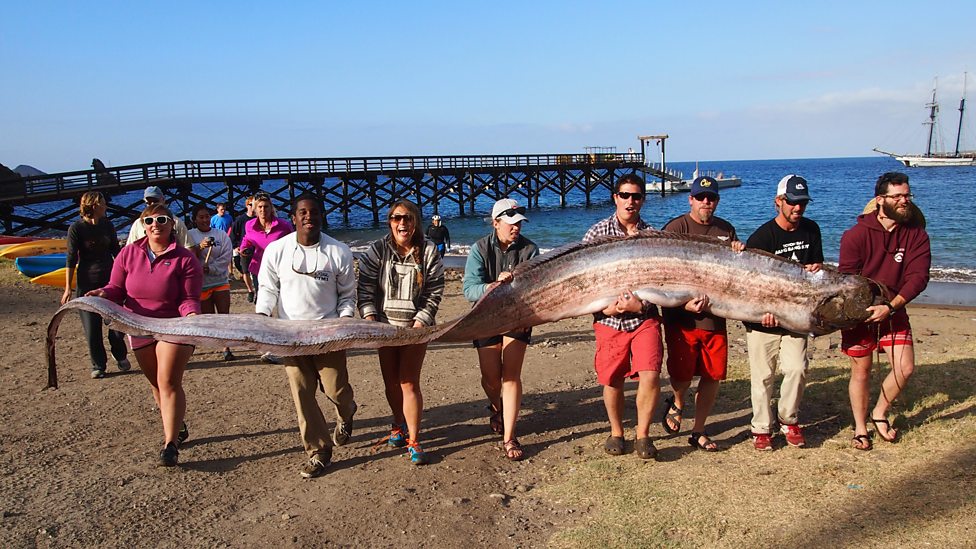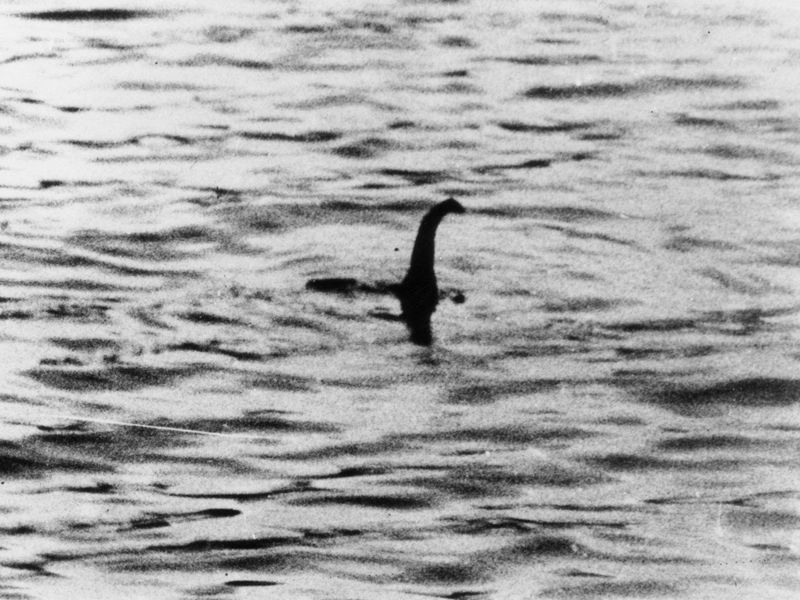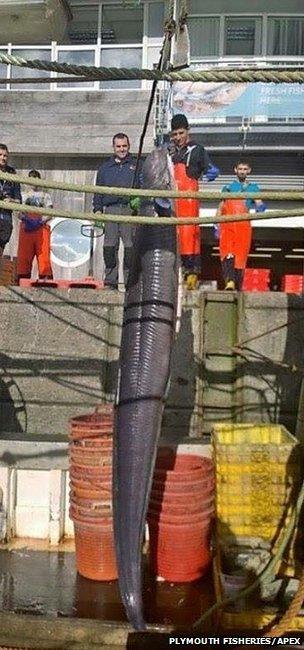
For centuries, seafarers greatest fear may well have been battling a sea monster which could destroy their vessel and possibly devour the crew. There are three mythical sea creatures many early mariners held in terror, all being giants: the sea serpent, the octopus, and the squid. Perhaps some giant sea serpents of legend could have been an anaconda or water boa. They are found in tropical South America, and Africa. Besides being in trees, bushes, or tall grasses, the anaconda, like all snakes, can swim. Anacondas can grow to be 17 feet long.
There are unconfirmed reports of giant anacondas even larger; from 8 to 12 meters (26.2 feet t 39.4 feet). Pythons that grow 23 feet or more that are found in Africa, Asia, and Australia. Many of these great snakes traverse the freshwater Amazon or Congo Rivers, but both rivers will eventually empty into the Atlantic Ocean. So it would be possible for giant snakes to enter the sea during storms and floods , and stay alive in salt water for short periods of time. Imagine the shock of sailors hundreds of years ago exploring the coasts of Africa and other far way places only to see a giant snake, dozens of feet long fighting for survival in salty waters!
Stranger than boas, anacondas and other snakes in the sea would be the presence of the mysterious giant oarfish. This bony creature most often inhabits a region from temperate waters to tropics, but has been found in the sea as far north as the arctic. It does appears to be serpent like. With a teeth-less mouth, and a long scaleless snake like body the giant oarfish is a spectacle to behold. It has been sighted numerous times. The animal can reach an epic length of 36 feet, with an unconfirmed sighting of a creature 56 feet long.

Giant oarfish are rarely seen, because they typically live at ocean depths of 600 to 3,300 feet. The massive, eel-like creature is thought to have inspired tales of giant sea serpents. It is not well studied or well understood. There are rare events of sightings. Most of the oarfish witnessed come to shore presumably to die. Of the recent documented encounters, the creatures are non-threatening to mankind and in failing health.
Another monster of the sea would be the giant octopus. This slippery mollusk lives in the coastal North Pacific Ocean, along California, Oregon, Washington, British Columbia, Alaska, Russia, Japan, and the Korean Peninsula. A full sized adult specimen can grows up to 30 feet across. The giant octopus has a stranger than fiction existence, with three hearts and nine brains, blue blood and eight arms. While the giant octopus is often cited as a sea monster, perhaps the the even larger giant squid is more so.
The giant squid and colossal squids are deep ocean dwelling aquatic animals. However rare instances are told of giant squids emerging from beneath the surface of the water. These creatures can grow up to 13 meters (43 feet) for females and 10 meters (33 feet) for males. Claims of 20 meters (66 feet) or even higher have been made, but not scientifically verified. Giant squids are found in North America, Central America, Europe, Africa, Asia, and Australia. The marine monsters of lore that bear long arms with tentacles; being giant octopuses and giant squids, have been known for centuries as the “kraken” or as “krakens”. Giant squids have been the inspiration for Jules Vern’s “20,00 Leagues Under the Sea“.
Now we come to the Loch Ness Monster, which is probably the best known aquatic monster. This creature allegedly inhabits Loch Ness; and Lake Ness in the highlands of Scotland, United Kingdom. The first account of the mythical beast goes back to the biography of the Christian Saint Columba on August 22, 565 AD. The Saint’s biography was published a century after the his death in 697 AD by Saint Adanan in a manuscript entitled “The Life of St, Columba”. The biographical documentation describes the saints encounter but oddly does not tell what the Loch Ness monster looks like. St. Columba is the Catholic patron saint of Derry, Ireland and of Scotland, and Ulster County, New York. The feast day of St Columba is celebrated on the day of his death on June 9th.
In modern times the loch ness monster was commonly thought to be a living plesiosaur or a elamosaurus from the dinosaur age; this theory has been scientifically discredited on number of reasons. They include the Loch Ness being too small, not enough food, the lake being too cold, and no such dinosaur fossils being found.

A photograph of the so called Loch Ness Monster taken in 1933 by a British surgeon, Robert Kenneth Wilson, depicting what looks like the silhouette of a long necked dinosaur floating on the surface of the water has been debunked as a hoax or fraud. A man named Christian Spurling, while on his death bed, in 1994, claimed to have made a model of the monster from a toy submarine he purchased at a Woolworth store and then attaching a plastic head to it by using wood putty. The model dinosaur was clandestinely placed on the water, then seen and then photographed by the unsuspecting and respectable Doctor Robert Wilson. Whether the event happened or not, most who view the dark image of Robert Wilson’s photo claim it looks like the silhouette of a duck, goose, or grebe afloat on the water of the lake.
On September 5, 2019, an international group of scientists studied Scotland’s loch Ness and found no evidence of a monster. Environmental DNA or genetic material shed by all life in loch ness, from about 250 water samples were collected, the year before, then carefully analyzed. No DNA was recovered of reptiles, dinosaurs, nor giant fish, such as catfish or sturgeon, nor of sharks, crocodiles, otters, seals, adders, nor lizards. But, a large amount of eel DNA was discovered. A theory long proposed is the Loch Ness Monster is a giant eel. Yet, the research analysis did not reveal the size of the eels of whom the DNA was overwhelmingly found. Under the conditions of the Loch’s climate eels normally grow 4 feet to 6 feet in length. Professor Neill Gemmell of the University of Otago, New Zealand, led the research study. At Loch Ness, DNA was detected from many normal, living creatures that include pigs, deer, sticklebacks ( fish that have strong and clearly isolated spines in their dorsal fins. Sticklebacks have no scales, but some of the species have bony armor plates.) that includes birds, toads, frogs, and amphibians.
In regards to giant eels, the “Daily Mail” reported in an article on May 16, 2015 about a Conger eel that was found, on May 14th in the water by fishermen off the coast at or near Plymouth Fisheries, Devon, Great Britain. The crew members aboard an inshore trawler named Hope, inadvertently captured an eel that measured an astonishing 7 feet long and weighing roughly 130 pounds. The huge eel got caught in the trawler’s nets and was dead by the the time it was brought out of the water.

Giant Conger eel found in Loch ness – 2015. Click on link for true story.
The Loch Ness Monster legend draws a million people a year to that region of Scotland, UK and generates 25 million Euros ($27,845,875.00) a year to the local economy. The creature can easily be a myth, but obviously there are many people that want the creature to be seen as a reality.


